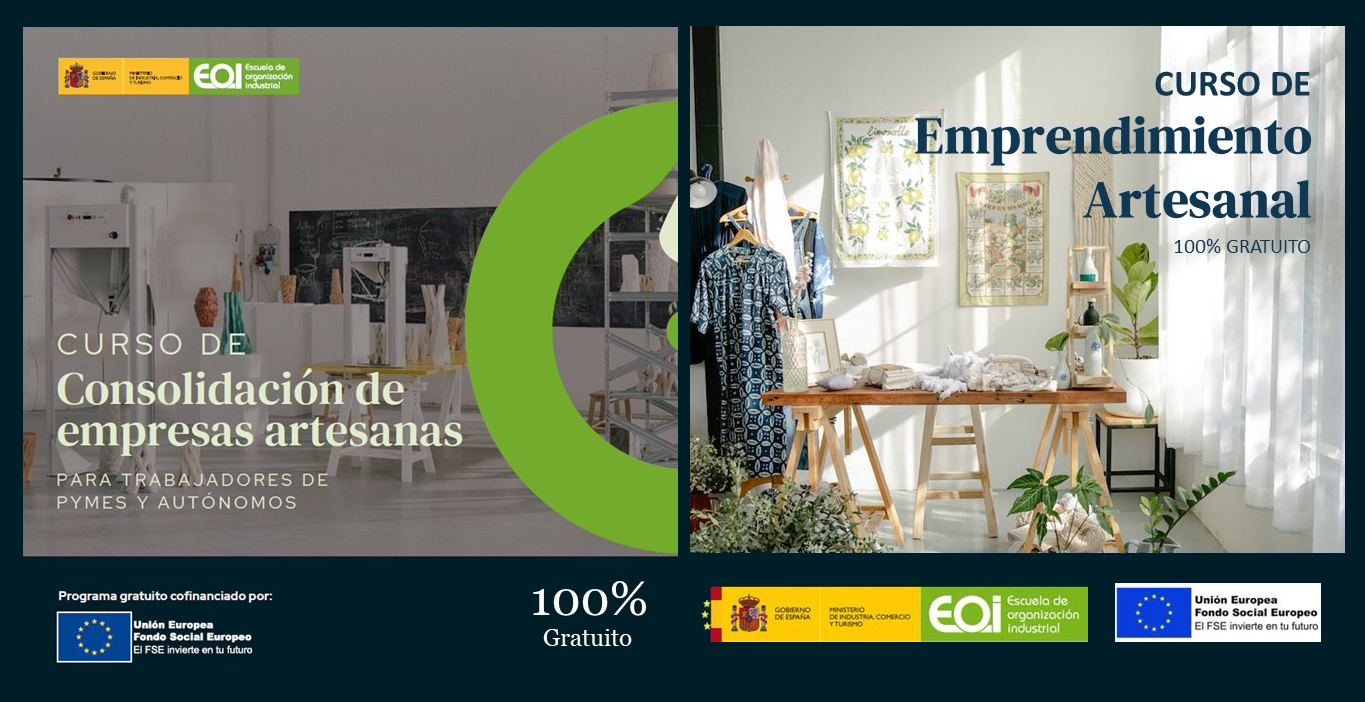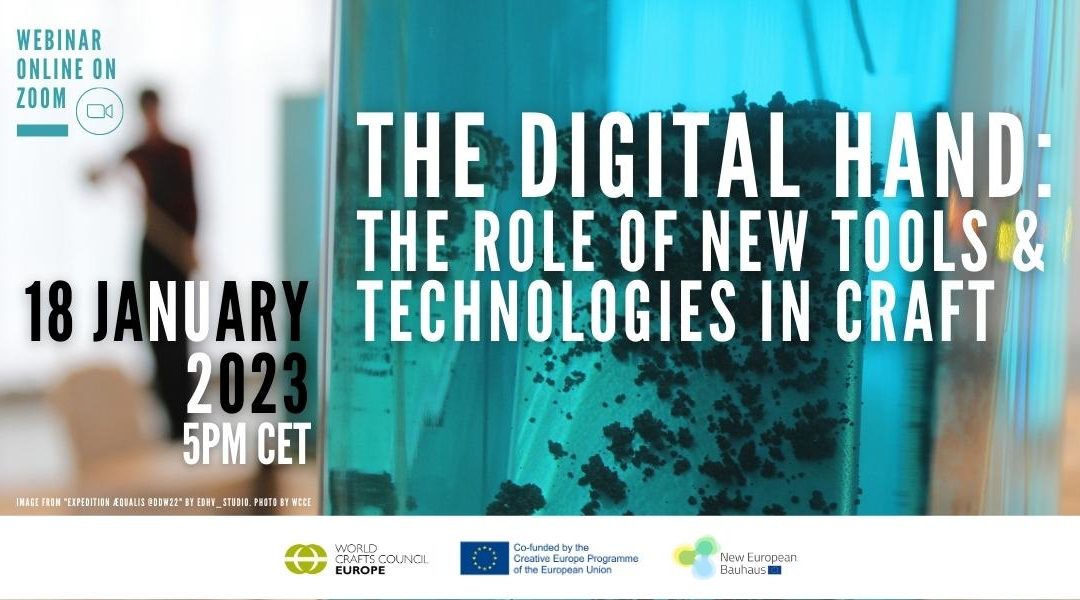
Conference "REINVENTING CRAFTSMANSHIP IN EUROPE"
Analysis of international models
The European Crafts sector is a rich and complex interwoven tapestry combining tradition, heritage, culture, skills and design. Crafts encompasses a wide range of disciplines as a mirror of the diversity of European cultural identity.
CRAFTS CODE aims to enhance the competitiveness of craft SMEs by developing a framework to stimulate policy learning and build capacity to improve the implementation of regional development policies and programmes.
The project idea is based on efforts made by the partners for the implementation of policies and projects supporting the competitiveness and the skilling up potentials of SMEs belonging to the crafts sector, in order to innovate it and mitigate the risk of disappearance of many traditional crafts and manufacturing. Crafts is a peculiar productive sector deeply linked with tradition and transmission of "knowledge", and plays a key role as innovator in Europe’s economy and social stability, even if most SMEs are not performing R&D activities as traditionally defined. Their competitiveness depends on their capability to improve processes, products and services.
€3,196,404.00
SME competitiveness
CRAFTS CODE will tackle adequately the key issues fostering knowledge about the development and implementation of new business models and products innovation systems for micro and SMEs in the crafts sector.
The Overall objective is to improve the SMEs competitiveness in the crafts sector by developing a framework stimulating policy learning and capacity building activities with the contribution of all involved stakeholders and improving the implementation of regional development policies and programmes, supporting handicrafts SMEs in all stages of their life cycle to develop and achieve growth and engage in innovation. Artistic craftsmanship is a entrepreneurial sector with unique characteristics: product, company dimensions, cultural and social content. So the sector needs specific policies and tailored actions.
The ROP ERDF 2014-2020 is the reference document supporting the business system and promoting regional interventions to increase the competitiveness of the regional economy. Among 6 thematic areas,the crafts sector is mainly linked to Axis 3 Promoting the competitiveness of SMEs (€152.4 million - 19.2%). 3 measures are included in Axis 3: 1) Support to Start-up and creation of new businesses, 2) Development of new business models and incentives for the purchase of qualified services for internationalization 3) Support the creation and expansion of advanced capabilities for the development of products and services. In this frame, the support to crafts micro and SMEs is not always fitting with the characteristics and needs of the local ecosystem.Crafts sector has specific characteristics belonging to emerging and traditional system, so the policy instrument itself could be improved and adjusted in order to create a wider range of growing possibilities and access to finance and overcome the negative trends of mortality rate of crafts' companies. Among the 3 measures, the access to ERDF for crafts' micro and SMEs reveals low rate. CRAFTS CODE project intends to impact on this policy instrument through a double strategy: 1)provide instruments and increase the level of innovation of the crafts sector in order to have access to ERDF, 2) build concrete dialogue with MA improving the design of thematic calls and including specific measures/requirements tailored for crafts' SMEs.
The program aims to complement wider investment programmes in targeted high growth and innovative sectors to support the creation of new quality jobs, boost innovation, as well as helping to grow the local economies in the Southern & Eastern region of Ireland. Investment Priorities: 3(a): Promoting entrepreneurship, in particular by facilitating the economic exploitation of new ideas and fostering the creation of new firms. Specific Objective:To increase employment levels in micro-enterprises in the S&E Region by supporting business start-ups, business expansion and higher innovation levels in micro-enterprises. The Irish craft sector is perceived as innovative and with a growth potential, that can lead to the creation of jobs, boost innovation and help the sustainable growth of local economies. However, there is also the recognition that the current policies and support mechanism are unable to address the specific characteristics of these businesses. In the case of the Southern region, this has been further highlighted in the Needs Analysis performed at the beginning of the current programme, that identifies the low level of business start-ups in the Southern Region along with limited access to credit for SMEs and the relatively low levels of innovation and internationalisation of the region’s micro-enterprise sector. In Ireland, the SME sector accounts for more than 70% of private employment, the Crafts Sector is made up of over 3,000 micro and SMEs employing over 6,000.
The policy instrument addressed is the Sustainable growth and jobs Structural Funds Programme of Finland (CCI number: 2014 116M2OP001), the action line 2.1.:
“Improving the competitiveness of SMEs. The investments aim to diversify business structures and increase the number of growing, innovative and internationally expanding companies. In order to reach these objectives, measures will target the start-up of new companies and the development of new business operations.”
Aiming also to reduce unemployment, fight social exclusion, and invest in education to ensure the availability of a skilled workforce.
And its extension to the Regional Policy of Ostrobothnia, in its flagship initiative “vitality of enterprises” (improving competitiveness of SMEs), which highlights:
- The importance of a versatile business life, valuable cultural environments and cultural heritage,
- Skilled work force
This holistic approach aims to tackle and limit, e.g. the strong dependence from big international companies, to balance and create a versatile industrial structure, and improve change readiness and flexibility. The creative sector is part of a versatile economic structure.
The policy instrument should be improved by connecting it to future trends (e.g. sustainability, lack of resources) impacting entrepreneurial activity, digitalization to provide new opportunities for SMEs, link it to regional realities, culture, businesses, employability and skills, and a versatile business ecosystem.
The programme aims to help Spain anticipate and adapt to global changes in the fields of energy, urban development, water, and transport. It aims to contribute to the fulfilment of the Europe 2020 "resource efficiency" flagship initiative, by bringing major economic opportunities, improving productivity, driving down costs and boosting competitiveness. This support in particular regarding sustainable growth will help recover the competitiveness of Spanish economy through a more sustainable resource efficient model. This programme is the major Spanish programme as regards the ERDF (EUR 5,5 billion contribution).
Among all thematic areas, the crafts sector is mainly linked to “TO3 - SMEs competitiveness”. This priority will focus mainly on following aspects: the promotion of the internationalization of SMEs; the promotion of entrepreneurial spirit and the creation of companies; as well as facilitating access to finance, especially in the most disadvantaged areas.
The comprehensive objective of the Policy Instrument is to ensure the development of the Central Hungary Region and to further improve its competitiveness.This is in relation to the project proposal, especially, as one of the programme’s main priority is “Developing a social environment and HR capacity to promote employment” which is the Axis chosen for the project purpose. The Competitive Central Hungary OP (CCHOP) is the follow-up of the Central Hungarian ROP for the programming period 2014-2020. CCHOP seeks to answer the challenge of enhancing the development and the competitiveness of a relatively developed region that features large internal disparities. Though CH’s economic and innovation potential is outstanding in comparison with other Hungarian regions, there are a large number of peripheral, lagging and poorly accessible sub-regions and settlements within the region. The budget allocated to CCHOP amounts to 3.9% of total funding available from Structural Funds over the period 2014-2020. The main priorities are: 1) improvement of enterprises' competitiveness; 2) R&D and technological innovation; 3) development of ICT; 4) development of tourism and protection of nature; 5) development of energy efficiency and enhanced use of renewable energy resources; 6) settlement development and public services; 7) social inclusion and human development; 8) increase of employment; 9) development of public administration.
SMEs are the main target group of the OPIC 2014-2020. The Programme's strategy, as a part of the implementation of the EU structural and investment funds (ESIF) in Bulgaria, is closely related to the Investment for growth and jobs goal and Bulgaria‘s contribution to "Europe 2020" targets.
Main objectives. ERDF support under OPIC 2014-2020 aims at addressing the needs, overcoming the challenges, and seizing the opportunities for development of Bulgarian economy. This will be done by engaging in smart growth (under priority axes 1, 2) and sustainable growth (under priority axes 3, 4). The Programme also aims at achieving a complementary effect in terms of inclusive growth. Only priority axes 1 and 3 are allowed for large enterprises, while most of the Programme's support targets SMEs.
Expected impacts are:
• Increase the share of innovative enterprises of the total number of enterprises by 10%
• Support more than 9000 enterprises through grant support and financial instruments
• Employment increase of 19.6% in supported enterprises
• Mobilise more than EUR 1 billion in private investment
• Increase the export volume of goods and services by SMEs and SMEs’ productivity
• Contribute to reducing the energy intensity of the economy
• Build a gas interconnector between Bulgaria and Serbia contributing to the development of energy infrastructure
This policy instrument needs to be improved as crafts sector currently lack of thematic calls and specific measures for crafts' SMEs.

Analysis of international models

Fifth face-to-face meeting of the National Crafts Observatory

Conclusion of the educational path of the project "Creative Connections"

Budapest Enterprise Agency Empowers Local Craftspeople to Flourish in Second Phase of Crafts Code Project

Crafts Code event in Florence

Crafts Code - Final Conference

Spain organised the 4th National Observatory of Crafts (ONA) Meeting in Murcia on 31st January

The School of Industrial Organization (EOI) and Fundesarte have launched a new call for training programs for consolidated craft companies and entrepreneurs.

World Craft Council Europe webinar on 18th Jan on the role of technology in craft

WCC Europe has opened up various new opportunities for artisans, craft organisations and stakeholders in 2023.
See here: http://bit.ly/3V9QB8s for details